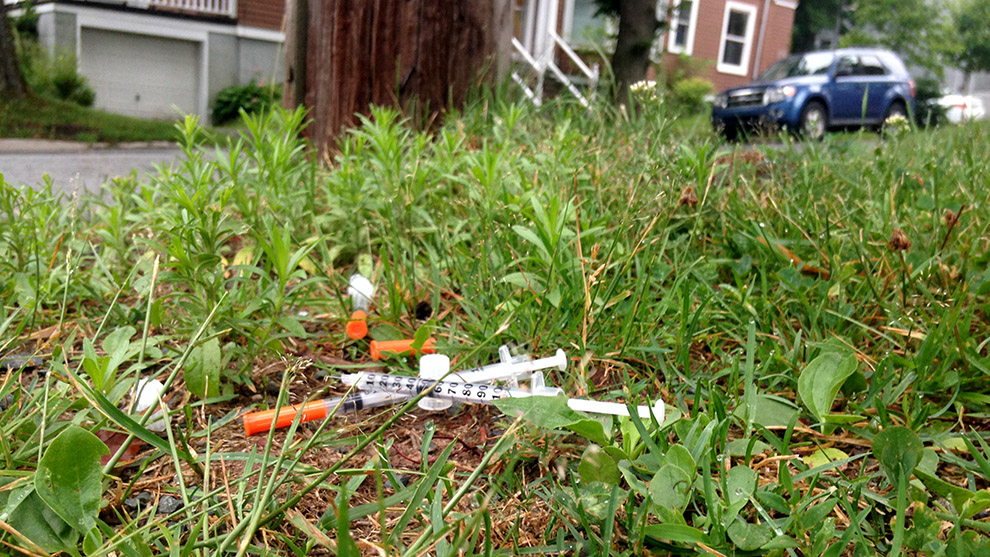Infectious Disease
Hep C “where AIDS was in the ’80s,” — HepNS
Nova Scotia’s rate increased close to 30 per cent, while Canada’s national rate dropped 26 per cent over the past 10 years.

caption
IV drug users at a “higher risk” of contracting hepatitis C, says HepNS.
caption
IV drug users at a “higher risk” of contracting hepatitis C, according to HepNS.The rate of hepatitis C has increased almost 30 per cent over the past decade in Nova Scotia, but the trend may represent something positive.
Lisa Barrett, an infectious disease physician with Nova Scotia Health Authority, says the increase in cases could be a result of more testing.
“When you test more, you find more,” says Barrett.
Hepatitis C cases in Nova Scotia vs. Canada
Source: Nova Scotia Open Data Portal and Reported cases from 1924 to 2014 in Canada – Notifiable diseases on-line, Public Health Agency of Canada
Hepatitis
HepNS program coordinator, Alex MacDonnell says the hepatitis C virus can live outside of the body for up to 72 hours, and last in a syringe for as long as three months.
She says it puts IV drug users at a “higher risk” of contracting the disease.
Testing
Barrett says Nova Scotia has done “better” than other provinces at testing “high risk” populations, like drug users and inmates.
“Because we’ve been so (well) at getting those people and reporting it, our rate looks like it’s increased.”
She suggests the jump in rate could “just be that we’ve just found more of the people who have hepatitis C.”
MacDonnell agrees that an increased rate is linked to increased testing, and says HepNS is focusing on awareness to get more people tested.
“Hepatitis C is kind of where AIDS was in the ’80s” in terms of awareness, says MacDonnell.
Treatment
Barrett says hepatitis C is the only chronic viral infection that has a “reliable cure.”
The provincial government began covering the drug in April 2015.
MacDonnell says the new drug is a “cure,” but there’s “fine print” that nobody really knows about. She says hepatitis C patients have to be “at a certain level” to qualify for treatment.
That’s true.
In Nova Scotia, government funded treatment of hepatitis C is restricted to people who have “significant scarring of the liver.”
“Right now, the government covers care for everyone, but not treatment,” says Barrett. “We’re really working hard to change that.”
MacDonnell disagrees with the government’s policy. She says everyone diagnosed with hepatitis C should be treated and have “the same opportunities.” MacDonnell compares it to cancer treatment.
“You don’t hear cancer patients being told ‘you have to have so much cancer before we treat you’.”
Communications advisor at Nova Scotia’s Department of Health and Wellness, Tony Kiritsis, says the province provides medical coverage based on recommendations from the Common Drug Review.
“We are currently part of a national working group to look at how we can expand coverage for the newer Hep C medications,” says Kiritsis.
Prevention
MacDonnell and Barrett both say the province can take more preventative measures on harm reduction, like needle exchanges, to improve infection rates.
Barrett says hepatitis C is still an “epidemic” because “it’s possible to contract the disease again once you’ve been treated and cured.”
There is one preventative measure that could end the disease entirely. She says one possible option is to “use treatment as prevention,” and treat everyone that is affected at the same time.
A public health measure that big “takes a lot of planning,” says Barrett. “It’s a very expensive medicine.”
Hepatitis C rate in Nova Scotia
According to the Notifiable Diseases in Nova Scotia 2014 Surveillance Report, Cumberland Health Authority had the highest rate of hepatitis C in the province. The health authority had a rate of 111.4 per 100,000 population.
The report notes that Cumberland has the largest federal correctional facility in Nova Scotia, which makes up 55 per cent of reported hepatitis C cases in the area.
Cape Breton District Health Authority (85.3/100,000 population), Colchester East Hants Health Authority (48.1/100,000 population) and Capital District Health Authority (25.9/100,000 population) had the next highest rates in the province.
About the author

Kathleen Napier
Kathleen Napier is currently completing her Master of Journalism (Data and Investigative) at the University of King’s College in Halifax. Special...